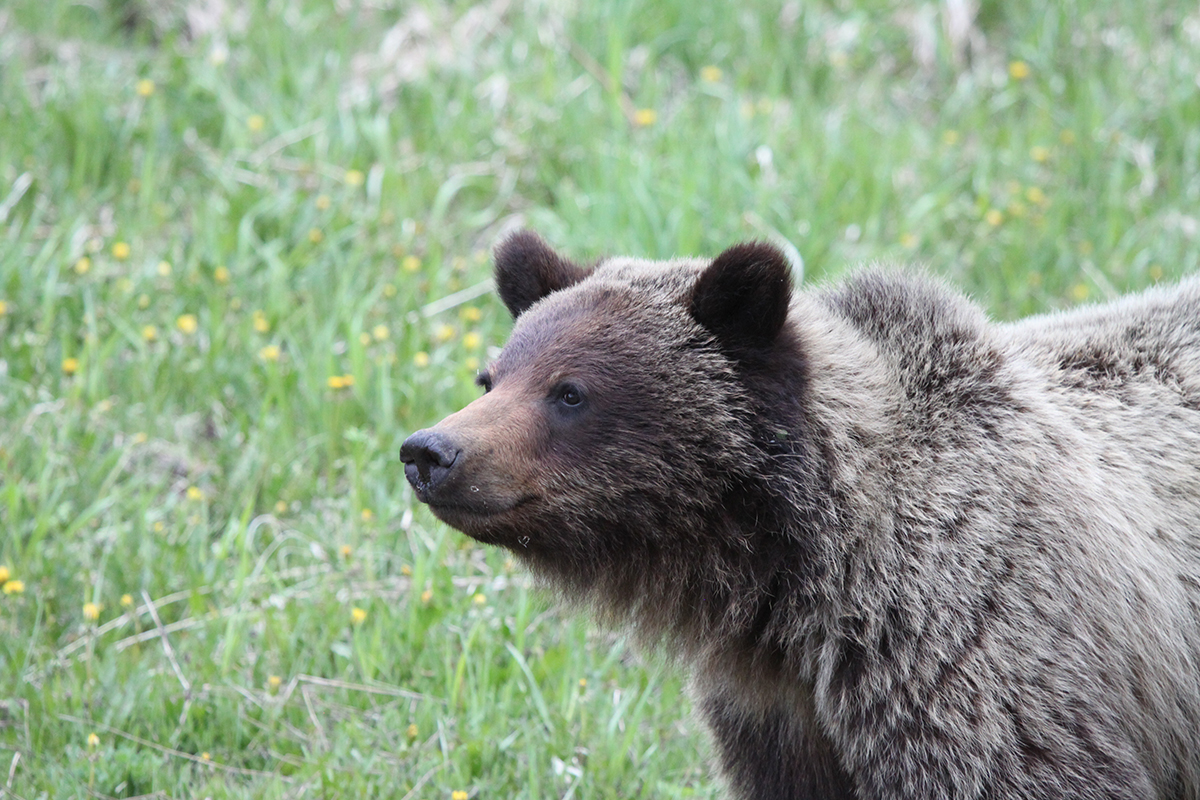
Management practices studied by Andrea Morehouse aim to reduce human conflict with large wildlife, such as the grizzly bear pictured here. Photo credit: Mark Boyce
When it comes to problem behaviour in Alberta's largest wildlife, biologist Andrea Morehouse says it's best to keep our money where their mouths are.
PhD graduate and former postdoctoral fellow in the University of Alberta's Department of Biological Sciences, Morehouse has studied human conflict with black bears, grizzlies, cougars, and wolves in Alberta with Professor Mark Boyce for the better part of a decade. The pair has recently published two papers based on research in Southwestern Alberta that shows human-bear conflicts are on the rise--and our mitigation strategies need to adapt to address this challenge.
 Keeping conflict to a minimum
Keeping conflict to a minimum
From 2012 to 2013, Morehouse and Boyce conducted an assessment of Alberta's intercept-feeding program. The initiative running from 1998 to 2013 involved providing high-quality food resources in the form of road-killed ungulates to reduce grizzly bear depredation of livestock during the calving period in the spring.
The problem, Morehouse explained, was that Alberta's 15-year program did not mitigate human-bear conflicts as planned.
"For wildlife management, it comes down to building adaptive programs that include ongoing monitoring and evaluation," said Morehouse. "We need to be able to adjust as we go. If something's not working, we tweak it and look to the data to see if that tweak has improved our system." To this point, the provincial government has suspended the provincial intercept feeding program, and based on the results of this research it is unlikely to be reinstated.
Attractant management, such as securing grain bins and garbage, is an important conservation strategy. Even more challenging is developing effective strategies to keep livestock out of temptation's way. The main takeaway, explained Morehouse, is to make evidence-based decisions.
Managing resources
"A lot of money and resources go into implementing and managing these wildlife-management programs," said Morehouse. "With ongoing monitoring and evaluation, we can ensure we're using our resources in the most effective way possible."
Now in Pincher Creek, AB, Morehouse is working with the Carnivores and Communities program, an initiative of the Waterton Biosphere Reserve, which brings together landowners, biologists, and land managers to build effective, grassroots conservation strategies.
"There is a lot of work that is happening in Southwestern Alberta," said Morehouse. "Conflict mitigation strategies are complicated, but we're making progress." Bear incidents in the area were lower in 2015 and 2016.
Want to do your part to keep wildlife wild?
- Don't put garbage out until morning of pickup.
- Take down bird feeders during bear season.
- Pick fruit from fruit-bearing trees.
- Always store food and trash in a secure, air-tight container.
For more information on how to protect Alberta's bears, check out the Alberta BearSmart Program. The recent research by Morehouse and Boyce was published in Ecology and Society and Ursus.